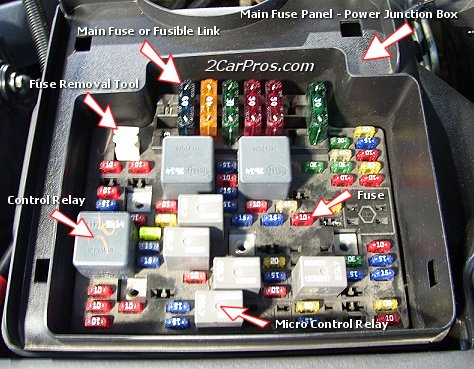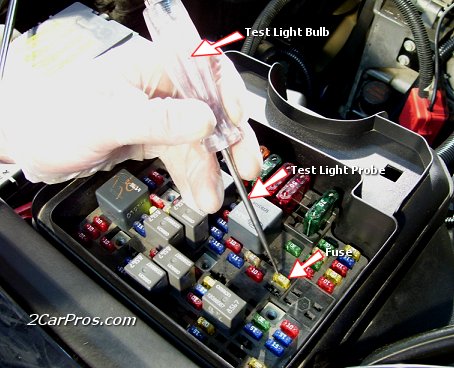|
|
|---|
Sunday, December 6, 2009
Electrical fuses protect vulnerable electrical circuits from shorts and burnt wiring. There is basically only one way a fuse can fail and that is, for at least a second there was a short circuit to ground that caused the fuse to blow. Most vehicles fuse panels are located under the hood or under the dash and is labeled with specific amperage ratings and the circuit the fuse protects. Always replace failed fuses with the proper amp fuse; not doing so can result in electrical system damage..
Step 1 - Identify fuses, control relays, micro relays and main fusible links:

This is a main electrical junction box; most electrical components are supplied and protected though this box. If an electrical component short circuits it will blow a fuse in this box in most cases. The control relay and micro control relay are used as a high amperage switch for devises that require high amounts of amperage for an extended amount of time. The fuse or fusible link supply voltage to sub electrical systems.
Step 2 - Checking Fuses and Main Fusible Links:

There are two ways to check fuses the first is the good old fashion way of removing each fuse and visually inspecting each fuse. It's time consuming but effective. And the easy way, but you need a "test light" before you can begin. Turn the key to the "on" position (do not start), ground your test light lead to a good ground source, like a metal brace under the dash, seat mount bolt or under hood brace. Then lightly touch the service port at the top of the fuse on both sides. If the test light illuminates on both sides of the fuse, the fuse is ok and working properly. If the fuse lights the test light on one side it is blown and needs to be replaced.
Labels: Fuses
0 Comments:
Subscribe to:
Post Comments (Atom)














